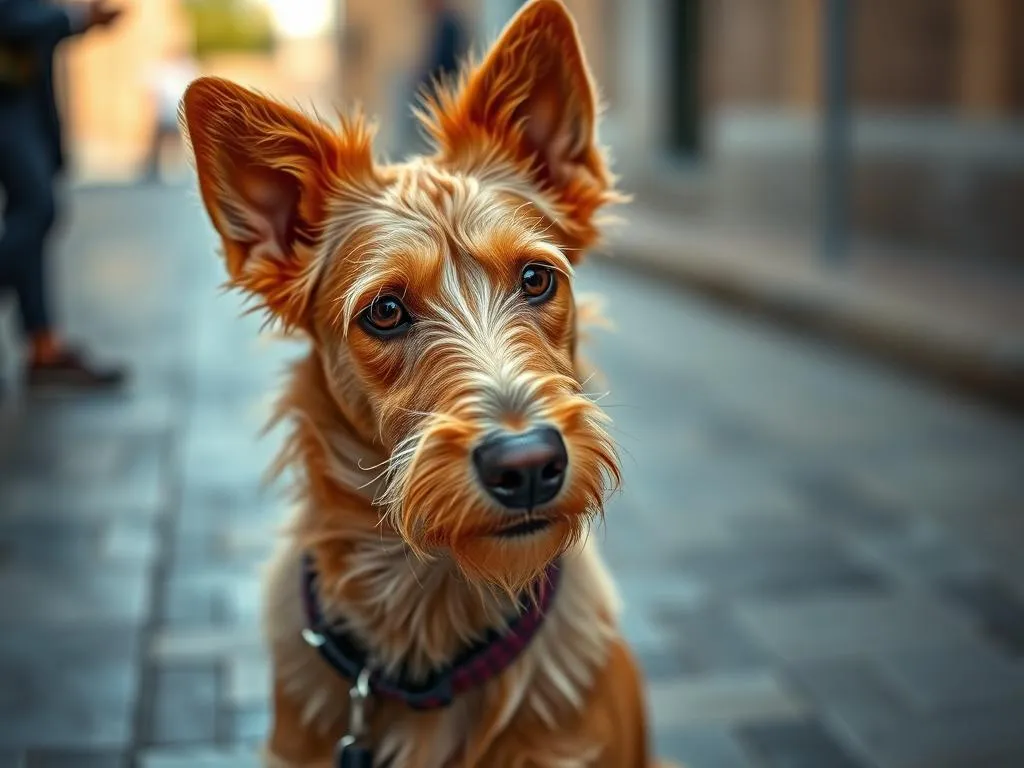
Overview of Dog Breeds
Definition of Dog Breeds
Dog breeds are groups of domestic dogs that share specific characteristics, including appearance, temperament, and behavior. Each breed has distinct traits that have been cultivated over generations, often for specific purposes such as herding, hunting, or companionship. Understanding these characteristics is vital for potential dog owners to ensure a harmonious match between the dog’s needs and the owner’s lifestyle.
Classification of Dog Breeds
Dog breeds are typically categorized into several groups, including working, sporting, hound, toy, and non-sporting breeds. The Portuguese Podengo is classified under the hound group, primarily due to its historical use in hunting small game. This classification reflects the breed’s keen sense of smell, agility, and energetic nature, characteristics that make them excellent hunters and companions.
The Portuguese Podengo
History and Origin
The Portuguese Podengo has a rich history that dates back to ancient times in Portugal. This breed is believed to be one of the oldest in the Iberian Peninsula, with roots that may trace back to the Roman Empire. Originally bred for hunting small game such as rabbits and rodents, the Podengo’s agility and keen senses made it an invaluable asset to hunters. Over centuries, the breed adapted to various terrains, showcasing its versatility and resilience.
Types of Portuguese Podengo
The Portuguese Podengo comes in three distinct size varieties: Pequeno, Medio, and Grande. Each variety has unique characteristics that cater to different lifestyles and preferences.
- Pequeno: The smallest of the three, standing about 8 to 12 inches tall and weighing between 9 to 13 pounds. This variety is known for its playful and affectionate nature.
- Medio: The medium-sized Podengo, ranging from 12 to 16 inches in height and weighing 25 to 35 pounds. They are energetic and make excellent family pets.
- Grande: The largest variety, typically standing 20 to 24 inches tall and weighing 44 to 66 pounds. The Grande is powerful and agile, ideal for hunting larger game.
Physical Characteristics
The Portuguese Podengo is characterized by its long, slender body, long legs, and a distinctive wedge-shaped head. Its coat can be smooth or wire-haired, and colors range from yellow to fawn, often with white markings.
- Coat Types:
- Smooth: Short and close to the body.
-
Wire-haired: Rough and longer, providing extra protection against the elements.
-
Size and Weight:
- Pequeno: 9-13 lbs
- Medio: 25-35 lbs
- Grande: 44-66 lbs
The breed’s large, erect ears and expressive eyes contribute to its alert expression, making it a striking sight.
Temperament and Behavior
General Temperament
The Portuguese Podengo is known for its energetic, intelligent, and alert personality. They are curious and eager to explore their surroundings, often displaying a playful demeanor. This breed tends to be friendly and affectionate with their families, making them great companions. However, they can also be independent, which may manifest as a stubborn streak if not properly trained.
Training and Intelligence
Training a Portuguese Podengo can be both rewarding and challenging. Their intelligence allows them to learn commands quickly, but their independent nature means that they require consistent and patient training. Positive reinforcement techniques work best, as they respond well to praise and treats.
Training Tips:
– Start training early to instill good habits.
– Use short and engaging training sessions to hold their attention.
– Incorporate socialization opportunities with other dogs and people to enhance their adaptability.
Activity Level and Exercise Needs
This breed has a high energy level and requires regular exercise to stay healthy and happy. Daily walks, play sessions, and mental stimulation are essential. Engaging in activities like agility training or scent work can provide both physical and mental challenges, keeping the Portuguese Podengo stimulated.
Care and Maintenance
Grooming Needs
The grooming needs of the Portuguese Podengo vary based on coat type.
- Smooth Coats: Require minimal grooming, with occasional brushing to remove loose fur.
- Wire-haired Coats: Need more frequent grooming to prevent matting, with brushing at least once a week.
Both coat types shed moderately, with increased shedding during seasonal changes.
Health Considerations
While the Portuguese Podengo is generally a healthy breed, they can be prone to certain health issues, including:
- Hip dysplasia
- Eye problems, such as cataracts
- Allergies
Regular veterinary check-ups and screenings can help catch any potential health issues early. Preventive care, including vaccinations and dental care, is crucial for maintaining their overall health.
Nutrition
Providing a balanced diet is crucial for the well-being of a Portuguese Podengo. Each size variety may have different nutritional needs:
- Pequeno: Smaller kibble and higher protein content for energy.
- Medio and Grande: Larger kibble sizes with a focus on joint health and muscle maintenance.
High-quality dog food that meets their specific needs, along with fresh water, is essential. Consulting with a veterinarian can help determine the best diet based on age, size, and activity level.
Living with a Portuguese Podengo
Suitability as a Family Pet
The Portuguese Podengo can make an excellent family pet. They typically get along well with children and can be protective of their family. However, their high energy levels may be better suited to active families who can provide ample playtime and exercise. Early socialization and training are crucial to ensure they are well-adjusted and comfortable around children and other pets.
Adaptability to Different Living Environments
While the Portuguese Podengo can adapt to various living environments, they thrive in homes with access to outdoor spaces. Apartments can work if the owner is committed to providing daily exercise and mental stimulation. A secure yard is ideal, allowing them to explore and play safely.
Lifespan and Aging
The average lifespan of a Portuguese Podengo ranges from 12 to 15 years. As they age, they may face common issues such as arthritis or dental problems. Regular veterinary care and a healthy lifestyle can help manage these issues and keep them active in their senior years.
Conclusion
The Portuguese Podengo is a unique and versatile breed with a rich history and a lively personality. Their adaptability, intelligence, and affectionate nature make them suitable companions for families and active individuals. Understanding their specific needs and characteristics is vital for potential owners, ensuring a rewarding relationship with these charming dogs.
FAQs
Common Questions About the Portuguese Podengo
Q: Are Portuguese Podengos good with children?
A: Yes, they generally get along well with children and can be protective and affectionate.
Q: How much exercise do they need?
A: A Portuguese Podengo requires at least 30-60 minutes of exercise daily, including walks and playtime.
Q: What grooming do they need?
A: Grooming needs vary by coat type; smooth coats require minimal grooming, while wire-haired coats need more frequent brushing.
Q: Are they easy to train?
A: They are intelligent and can be trained easily with consistent, positive reinforcement methods.
Q: Do they have any common health issues?
A: While generally healthy, they can be prone to hip dysplasia and eye problems.
Understanding the Portuguese Podengo can help potential owners appreciate the unique traits and needs of this lively breed. With their rich history and engaging personalities, they are sure to capture the hearts of many dog lovers.









